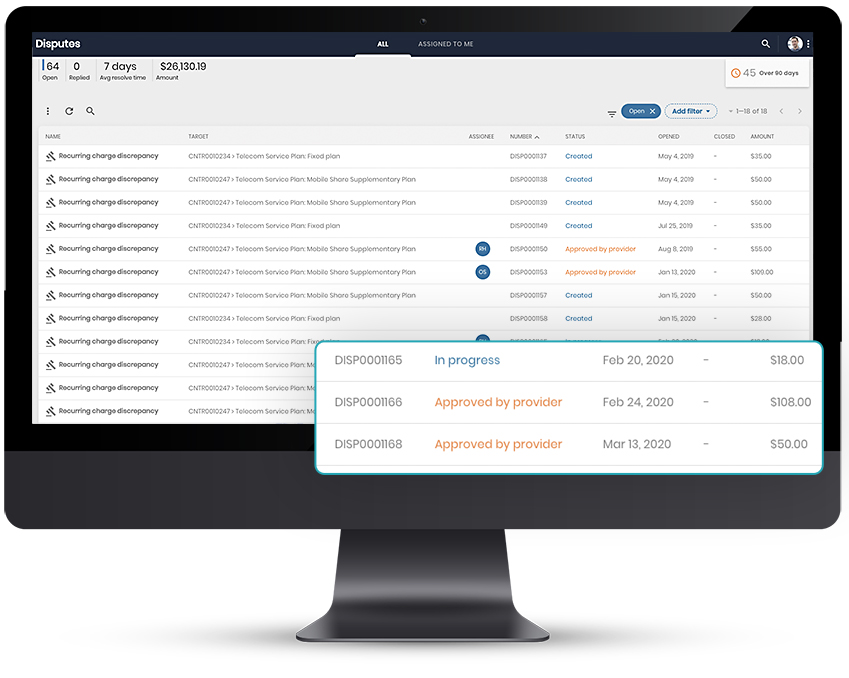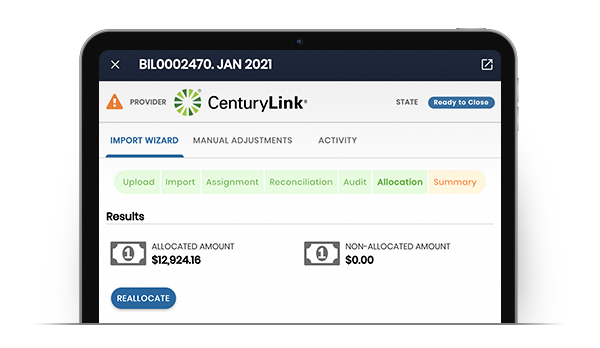Optimizing your business expenses can be a critical factor in unlocking profits. In the connected world that we live in today, telecom invoices stack up – each with its own set of contracts, fine print, and agreements. When you’re so busy focused on growing a business, who has time to think about managing the telecom bills?
One of the most overlooked categories of IT expenses is telecom expenses. Telecom expense management is a professional service designed to address every aspect of telecom billing including:
- Invoice management
- Expense management
- Reimbursements
Businesses of all sizes can realistically use telecom expense management services. Employees need their own cell phones and internet services to be productive in this global and connected workplace that we find ourselves in. Even smaller companies are realizing how many telecom agreements that they are participating in but might not be taking advantage of. Companies that are moving their primary methods of communication to Zoom, Slack, or Microsoft Teams may not need traditional phone services anymore and could save money by turning these traditional telecom services off.
Wasted dollars in your telecom budget can often be buried in the depths of your income statement. But it’s often these small differences that can make the difference in having a record-breaking quarter. Get regular telecom audits to proactively reduce these hidden expenses.
Introduction to Telecom Audits
One of the keys to managing your telecom spend is to perform regular telecom expense audits to inspect the company’s telephone bills, voice data usage, internet usage, and more. The audit process begins with an initial meeting between the company and the licensed auditor to better understand what type of telecom services are currently used. The auditor is then granted access to all the business’s telecom bills and documents and examines them for billing errors, metering issues, and other common areas of opportunity to save, often called bill auditing.
A telecom audit can help reduce wasted fees and clean up a business’s telecom portfolio so the expenses are easier to manage. Getting a regular telecom audit can optimize your company’s expenses more efficiently and can be a massive time and money saver in the long run. It can be surprising the kinds of telecom billing errors that can occur in even the most standard agreements.

The Most Common Telecom Billing Errors
Thinking of all the different telecom agreements that your company has in place can seem overwhelming, but knowing the common telecom billing errors will put you one step ahead of the competition:
- Improper Billing: If you want to make sure that your telecom expenses are optimized, the first place to start is by reviewing all of your telephone bills and agreements to make sure that you’re not getting improperly billed. Improper billing can include billed late fees and penalties which can accrue interest rapidly, unapplied discounts, charging for services that have been discontinued, paying for someone else’s service, and a number of other billing inaccuracies. Addressing these inaccuracies can lead to significant cost reduction. Read the fine print in the contracts, get familiar with the line items on the invoice, and understand what services that your company is signing up for.
- Metering Issues: It’s hard to imagine, but companies may be overestimating how much their businesses need for phone and wireless services. Metering issues are common and could be costing you more on your telecom bill than you actually use.
- Duplicate Charges: Just like personal credit cards or phone bills, duplicate charges for services can be a headache. This problem is made much worse for organizations with hundreds our thousands of telecom invoices coming in every month. Make sure your telecom audit checks for duplicate charges so you avoid wasting valuable spending.

Telecom Inventory Best Practices
Telecom inventory management really comes down to knowing what your telecom inventory is and understanding what your company is currently using vs. what it is paying for. To accomplish this, it’s important to follow inventory best practices to reduce complexity:
- Gather the information you need: Whether it’s contractual agreements, billing statements, service providers, subscriptions network assets, or anything else, actively gather and keep information regarding your telecom expenses up-to-date. This can even include the communications that happen on the phone or in a series of emails. For example, understanding what each of your locations negotiated with the telephone service provider can impact the bottom line.
- Have a seamless workflow for new services: It’s crucial to know what your company’s ongoing needs are and to have a standard set of procedures in place when the company needs a new service. Working with the different departments at a business such as procurement and finance can lead to your company selecting the best possible pricing on long-term service contracts. There may also be opportunities to bundle services and reduce the overall pricing.
- Keep an inventory list up-to-date: As companies scale up or down in their lifecycle, the company’s needs often change. Having an inventory that is up-to-date can save significant time and money when your company is in a crunch. Some of the inventory that you can track include:
- Devices
- Locations
- Circuit IDs
- Cost centers
- And more
Performing regular telecom audits can be a great way of ensuring your inventory list stays up to date with the latest trends.
Telecom Audit Services with brightfin
Brightfin’s IT expense management software assists business operators in managing the complexity of IT expenses. Our telecom experts review contracts, invoices, and inventories to give you a clear understanding of your telecom environment. Actionable insights through brightfin’s dashboards provide IT teams with multiple ways of generating ROI through cost savings, efficiencies, and more. Having full transparency into the inventory you have, using best practices to manage that inventory, and avoiding the common telecom billing errors that most companies fall for can put you at a significant advantage.





